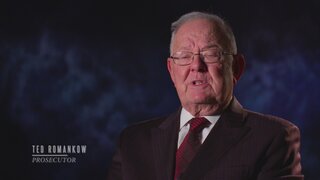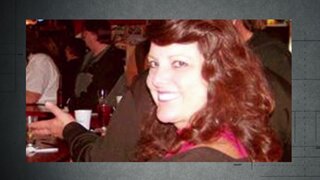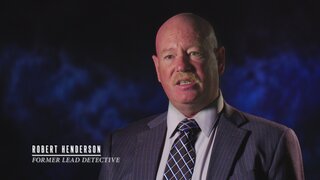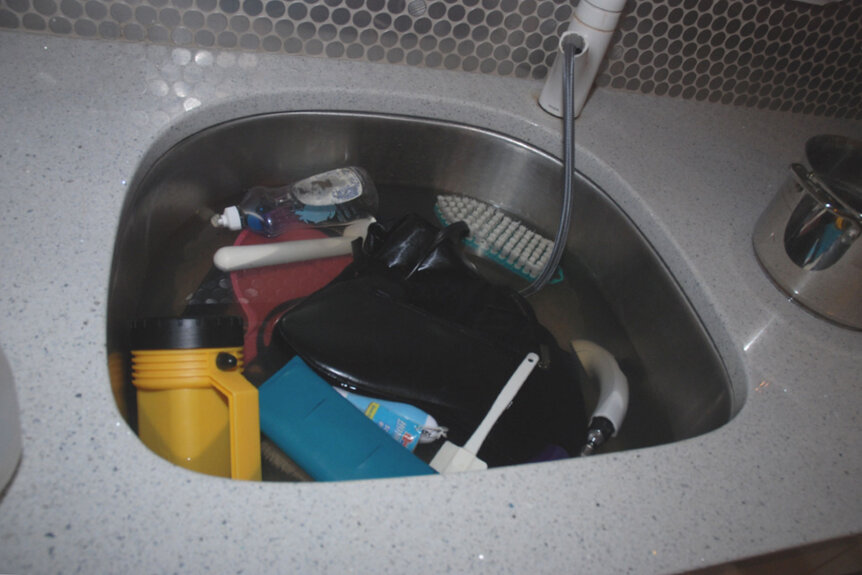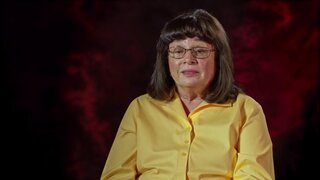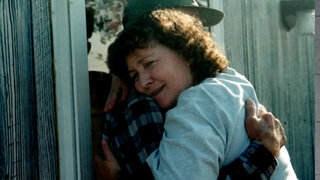Create a free profile to get unlimited access to exclusive videos, breaking news, sweepstakes, and more!
‘I Never Saw So Much Trauma To One Person’s Body’: After Murdering Woman, A Killer Makes A Meal In Her Home
Diane Zaleski’s murder went unsolved for a year before her killer, a man who made himself something to eat and even used her credit card to shop online before fleeing, was finally found.
In the fall of 2010, a quiet neighborhood in Union, New Jersey was rocked by a gruesome crime that would go unsolved for over a year.
On the afternoon of November 18, an elderly couple made a frantic 911 call they never thought they’d have to make. They’d gone to their daughter’s house after she failed to answer her phone or show up to an appointment, only to find her dead inside.
When authorities responded to the scene, what they found shocked even them: There was blood all over the house that led down to the basement, where the victim, Diane Zaleski, was lying in a pool of her own blood, having apparently been dragged down there by her killer. She’d been stabbed multiple times.
“I never saw so much trauma to one person’s body,” Mike Manochio, a member of the homicide task force in Union County, told “An Unexpected Killer," airing Fridays at 8/7c on Oxygen.
Zaleski was found with defensive wounds on her arms, suggesting that she’d fought for her life. She was only partially dressed, with a pair of underwear near her head, leading authorities to suspect that she’d been sexually assaulted before she died, but cleaning solution left near the door also suggested that the culprit had cleaned the victim of evidence before fleeing the scene. However, the killer left behind one mistake: a drop of blood, which they quickly sent away for testing.
Evidence at the scene indicated the culprit had taken a shower and had even eaten before leaving. There were also no signs of forced entry, suggesting that the culprit may have been comfortable at Zaleski's home because they knew each other. But who in Zaleski’s life had reason to want her dead?
After working for nearly 20 years as a legal secretary, Zaleski had retired and was living a happy life, according to those who knew her. She did not have a partner or children, but she had a rich social life, cared for her family, and was still hopeful she'd find love one day.
Meanwhile, the results of the blood test showed that the killer was a man, but they were unable to identify who it was. An autopsy report also concluded that Zaleski had died from multiple blunt force injuries, but they were unable to confirm if she’d been sexually assaulted prior to her death, due to the killer cleaning her body.
“The person that had done this was obviously very violent, some person who had snapped,” prosecutor Ted Romankow said.
Police began interviewing her friends and learned Zaleski had a tumultuous relationship with a man named Mike Prunell, who’d once asked her father for permission to marry her. They’d known each other for 20 years, which was shocking to police because when they’d first contacted Prunell after coming across his contact info in Zaleski's phone, he’d denied ever even knowing her.
Investigators began digging into Prunell’s history and found he had a disturbing past: Not only was Mike not his real name, but he had a history of violence with a former wife, who went on to get a restraining order against him, having once told police he would routinely beat her.
When authorities brought Prunell in for a second round of questioning, he again denied knowing Zaleski, but he was unable to provide an alibi for the night of the murder. He did, however, submit to having his DNA tested, and when the results showed that it was not a match to the drop of blood found at the crime scene, police were forced to widen their search.
It was when investigators searched Zaleski’s computer that they found another disturbing lead. It became clear that someone, likely the killer, had used Zaleski’s computer after her death. They’d watched porn and had attempted to use her credit card to buy multiple pricey tech gadgets online. Although the purchases didn’t go through, whoever it was had tried to arrange for the items to be delivered to Zaleski’s house, meaning they would have felt comfortable going back to the house to collect the items after they were dropped off.
Then they were hit with another piece of shocking information: The underwear that was found near Diana’s head had been tested for DNA and the semen on it belonged to her brother, Ron.
Police called Ron in for questioning, and when he was faced with the DNA test results, he was visibly shocked, authorities recalled. He didn’t understand how it could have happened, and said Zaleski would routinely do her laundry at his house as a possible explanation.
Ron’s wife was also called in for an interview and she insisted Ron was at home with her at the time of the murder. She also said the underwear in question actually belonged to her and not Zaleski. The two women wore the same size and style of underwear. Police accepted the explanation, and DNA test results confirmed the blood found at the crime scene was not Ron’s.
Weeks and months passed without answers as the one-year anniversary of Zaleski’s death passed. However, with the anniversary came renewed media coverage, which led to a flurry of new tips for police.
One tipster, a woman from out of state, told police that she’d been talking to someone online who said they were worried because they were being investigated in connection with a crime in New Jersey. The woman, known only as Anne, said that she’d met the man on Facebook and they’d been friends for years; during that time, she said, he’d admitted to selling drugs and even committing a murder. When he started talking about being worried because the police had his DNA, Anne began searching online for any open cases that may have been a match and found an article about the one-year anniversary of Zaleski’s death, which included the previously unreleased information about the DNA found at the scene.
“The information in the article matched what I knew about my friend and a lightbulb went off in my head. I knew that was him. It had to have been him,” she told producers.
She said her friend had admitted to things like doing laundry at the victim’s house and eating there, details that were not included in media coverage of Zaleski’s murder. It was enough for authorities to book a flight to speak to the woman, who told them the killer’s name: Arnell Yearwood.
Police recognized the last name immediately: It was the same name of a family who lived across the street, diagonally, from Zaleski. They’d even spoken to the suspect’s mother the year before when canvassing the area. When they went to speak to her again, she claimed she didn't know where her son was, but investigators did learn Arnell Yearwood would occasionally live in the basement of her home. He was also small in stature for an adult and could possibly be mistaken for a teenager — this interested authorities because Zaleski hired local kids to do yard work for her at times.
While surveying the area, police found Yearwood and brought him in for questioning, where he feigned innocence. Still, he consented to a DNA test, and the results proved it was his blood found at the crime scene. In 2012, two years after Zaleski's brutal murder, her suspected killer was finally arrested and charged with murder.
It was then Yearwood told detectives what happened: On the day of the killing, Zaleski had let him into her house after hiring him to do a few chores for her. When he later tried to suggest a romantic relationship, she rejected him, which is when he snapped, stabbing her repeatedly with a pair of scissors and then strangling her. He dragged her body to the basement and left her there, and then cleaned the crime scene and even made himself something to eat.
The only thing he didn’t explain was his motive.
“Whatever it was that caused him to act so viciously, it will never be explained,” Romankow said.
In court, Arnell Yearwood pled guilty to murdering Zaleski and received a sentence of 30 years in prison, the maximum sentence.
Today, Zaleski's loved ones remember her as someone who was warm, kind, and loved by those who knew her.
“It’s been quite a few years since she’s gone but I still miss her,” her friend Joanne Gouveia told producers. “Her heart is still with me.”
For more on this case and others like it, watch "An Unexpected Killer," airing on Fridays at 8/7c on Oxygen or stream episodes any time on Oxygen.com.
